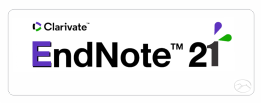Publicado 2024-10-30
Palabras clave
- predicative adjectives, expressives, class of predicates, interactive communication, poly-intentionality of the speech act.
Cómo citar
Derechos de autor 2024 Oleksandra Deichakivska

Esta obra está bajo una licencia internacional Creative Commons Atribución 4.0.
Resumen
The article examines predicative adjectives as components of the speech acts of apology and gratitude, as well as the speech act of compliment. The examples show the importance of the speech acts of apology, gratitude, and compliment; the general characteristics and multi-intentionality of these acts are presented. Peculiarities of the language implementation of apology, gratitude, and compliment when using the structure Vcop+Adj are highlighted. Ways of implementing the contact-establishing strategy by using expressive speech acts of apology, gratitude, praise, and compliment are demonstrated. Since all considered speech acts aim to change the addressee's psychological state, their components are predicative adjectives belonging to the group of expressives. According to their position in the discourse, the speech acts of apology, gratitude, praise, and compliment are mostly initial acts. All considered speech acts suggest that predicative adjectives are modified by various intensifiers that occur in different syntactic structures. They can be expressed using a direct speech act, whose linguistic semantics corresponds to the illocutionary force of the speech act, and using an indirect speech act, realized with the help of speech forms whose illocutionary force does not align with their semantics.
Descargas
Citas
- Andreichuk, N. I. (2008). Paradigm as a term. Bulletin of the Lviv Polytechnic National University «Problems of Ukrainian Terminology», 620, 254-257. http://tc.terminology.lp.edu.ua/TK_Wisnyk620/TK_wisnyk620_andrejchuk.htm
- Bilous, O., Brunner, R., & Bilous, O. (2022). Historical and critical views on the lexico-grammatical structure of the German language. Proceedings. Philological Sciences, 202, 18-26. https://cusu.edu.ua/images/nauk_zapiski/filology/issue_202_end.pdf
- Black, E. (2006). Pragmatic Stylistics. Edinburgh: Edinburg University Press. https://coehuman.uodiyala.edu.iq/uploads/Coehuman%20library%20pdf/English%20libraryكتب%20الانكليزي/linguistics/Pragmatic%20Stylistics.pdf
- Boiko, N. I., & Khomych, T. L. (2011). Connotative lexical semantics: Intensive and parametric components [Monograph]. Nizhyn: NSU Publishing House named after M. Hohol. http://erpub.chnpu.edu.ua:8080/jspui/bitstream/123456789/4619/1/Конотативна%20лексична%20семантика%20інтенсивний%20і%20параметричний%20складники%20%20%5Bмонографія%5D.pdf
- Brown, P., & Levinson, S. (1978). Politeness: Some universals in language usage. Cambridge University Press. https://www.academia.edu/26395652/Politeness_Some_universals_in_language_usage
- Celik, B., & Kapukaya, K. (2022). Comparative analysis of short-term intensive and long-term adaptive language teaching curriculum. Amazonia Investiga, 11(58), 104–111. https://doi.org/10.34069/AI/2022.58.10.11
- Cherednichenko, O. M. (2015). The utterance of apology as direct and indirect speech act. Scientific Notes of the National University "Ostroh Academy". Philological Series, 55, 275–277. https://lingvj.oa.edu.ua/articles/2015/n55/100.pdf
- Deichakivska, O. (2024). Predicative adjectives in the composition of expressions as tactics of positive and negative politeness strategies. Amazonia Investiga, 13(74), 239–247. https://doi.org/10.34069/AI/2024.74.02.20
- Deychakivska, O. V. (2020). Predicative adjectives as a means of expressing compliment. Language. Literature. Folklore, 1(1), 56–62. https://doi.org/10.26661/2414-9594-2020-1-1-8
- Fitzgerald, F. (2021). The Great Gatsby. Pan Macmillan. https://www.gutenberg.org/cache/epub/64317/pg64317-images.html
- Fowles, J. (2006). The ebony tower. Vintage Books. https://link.springer.com/chapter/10.1007/978-1-349-26704-0_5
- Hladush, N. F., & Pavliuk, N. V. (2019). Contrastive grammar: Theory and practice (teaching manual). Kyiv: Borys Hrinchenko University; National Kyiv-Mohyla Academic University. http://elibrary.kubg.edu.ua/id/eprint/27556/1/N_Gladush_N_Pavliuk_Contrastive%20Grammar.pdf
- Kivenko, I. A. (2015). Gratitude speech act from the point of view of its sincerity. Notes on Romano-Germanic Philology, 2(35), 96–104. http://nbuv.gov.ua/UJRN/zrgf_2015_2_15
- Kostova, E. (2005). The historian. Little, Brown and Company Hachette Book Group. https://d-pdf.com/book/5259/read
- Kovtun, O. V. (2021). Contrastive grammar of evaluation: The problem of interpretation of key terms. Scientific Notes of TNU Named After V. I. Vernadskyi. Series: Philology. Journalism, 32(71), 150-156. http://www.philol.vernadskyjournals.in.ua/journals/2021/4_2021/part_2/4-2_2021.pdf
- Kozak, V., Posmitna, V., Shutenko, S., Leshchenko, A., & Romaniuk, V. (2023). Language legislation in the era of independence: sociolinguistic dimension. Amazonia Investiga, 12(68), 294–302. https://doi.org/10.34069/AI/2023.68.08.27
- Le Carre, J. (1993). The night manager. Penguin Books. https://cdn.penguin.co.uk/dam-assets/books/9780241337219/9780241337219-sample.pdf
- Lyhosherstova, N. (2015). Temporal nouns and adverbs as the main lexical means of expressing time (on the material of modern Arabic and Ukrainian languages). Bulletin of KNLU. Philology series, 18(2), 109-114. http://rep.knlu.edu.ua/xmlui/bitstream/handle/787878787/1822/ТЕМПОРАЛЬНІ%20ІМЕННИКИ%20І%20ПРИСЛІВНИКИ.pdf?sequence=1&isAllowed=y
- Maugham, S. (1976). The Razor’s Edge. London: Pan Books. https://gutenberg.ca/ebooks/maughamws-razorsedge/maughamws-razorsedge-00-h.html
- Maugham, S. (1985). Theatre. London: William Heinemann, 307 p. https://content.ikon.mn/banners/2015/4/9/1472/william-somerset-maugham-theatre.pdf
- McEwan, I. (2007). On Chesil Beach. London: Vintage Books. https://readli.net/on-chesil-beach/
- Ng, C. (2017). Little Fires Everywhere. New York: Penguin Press. https://online.fliphtml5.com/pezzr/wmou/#p=1
- Norrick, N. (1978). Expressive illocutionary acts. Journal of Pragmatics, 2(3), 277–291. https://doi.org/10.1016/0378-2166(78)90005-X
- Ostroushko, O. (2009). Functional and pragmatic features of adjectives in television advertising texts. In Journalism, philology and media education (Part 2, pp. 3-8). Poltava: Osvita. https://elibrary.kdpu.edu.ua/bitstream/0564/1418/1/ФУНКЦІОНАЛЬНО-ПРАГМАТИЧНІ%20ОСОБЛИВОСТІ.pdf
- Ostrovska, L. (2022). Theoretical problems of the syntax of the modern Ukrainian language: Study guide. Mykolaiv: ChNU named after Petro Mohyla. https://dspace.chmnu.edu.ua/jspui/bitstream/123456789/711/1/Островська%20Л.%20Теоретичні%20проблеми%20синтаксису.pdf
- Searle, J. R. (1976). A classification of illocutionary acts. Language in Society, 5(1), 1–23. https://doi.org/10.1017/S0047404500006837
- Tartt, D. (1992). The Secret History. NY: Vintage Books. https://pdfroom.com/books/the-secret-history-vintage-contemporaries/Gk20o0O7gpm
- Tartt, D. (2013). The Goldfinch. NY: Back Bay Books; Little, Brown and Company. https://fr.scribd.com/document/544482142/The-Goldfinch-Donna-Tartt
- Vykhovanets, I., & Horodenska, K. (2004). Theoretical morphology of the Ukrainian language. Kyiv: Pulsary. https://acortar.link/iUdhJ0











